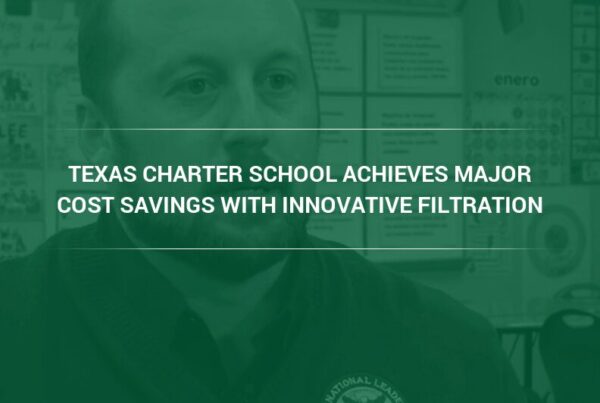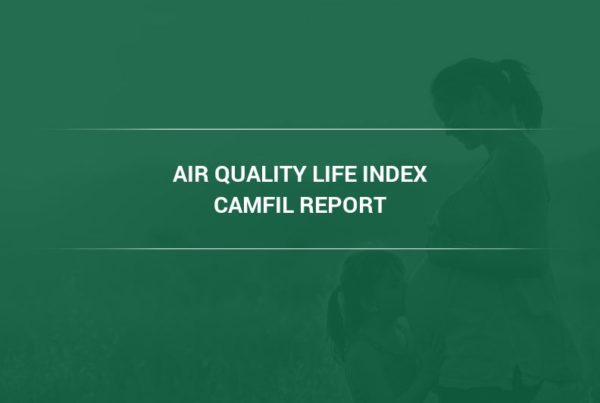New Research Finds Possible Association Between Wildfire Smoke and Increased COVID-19 Infection Rates
The wildfire season of 2020 set several records in the United States, with 2.3 million more acres burning than the ten-year average. This year’s fires may bring even more damage. Oregon, for example, has already experienced 26 large wildfires, compared to last year’s seven large wildfires by the same point in the year.
Wildfire season is also well underway in California, Washington State, Nevada, and several Canadian provinces, but the effects of the smoke are being seen across the continent. Washington D.C. is experiencing haze and decreased air quality, the sun is glowing red in New York City, and Baltimore and Philadelphia have issued air quality warnings due to wildfire smoke.
What Pollutants Does Wildfire Smoke Produce?
Wildfire smoke contains a variety of gaseous pollutants, which are the products of combustion, including:
- carbon monoxide
- nitrogen oxides
- carbon dioxide
- methane
- ozone
- water vapor
- smoke odor
The Environmental Protection Agency (EPA) considers particulate matter to be the primary public health threat coming from wildfire smoke. Particulate matter refers to microscopic particles suspended in the air made out of any material. Particulate matter is classified by its size range as follows:
- PM10 – particles with a diameter of 10 microns or less.
- PM2.5 – particles with a diameter of 2.5 microns or less.
- PM1 – particles with a diameter of 1 micron or less.
Study Finds Link Between Particulate Matter from Wildfire Smoke and COVID-19 Infections
The study, conducted in Reno, Nevada, by the Center for Genomic Medicine at the Desert Research Institute (DRI), Washoe County Health District (WCHD), and Renown Health (Renown), was published in the Journal of Exposure Science and Environmental Epidemiology.
The study sought to examine a possible connection between the elevated presence of fine particulate matter (PM2.5) in the air following wildfires in 2020 and the rate of COVID-19 infection in the area.
The researchers found that a 10 µg/m3 increase in the seven-day average of PM2.5 was associated with a 6.3% relative increase in the rate of positive COVID-19 tests. Specifically, the increase was seen two to six days after the increase in ambient pollution, suggesting that even short-term exposure to particulate matter pollution increases the likelihood of infection.
This result supports the findings of previous research, which suggests that the presence of fine particulate matter in the air is linked to increased COVID-19 infections.
Why Does Polluted Air Increase the Risk of COVID-19 Infection?
Scientists speculate several reasons why the presence of pollution in the air, specifically PM2.5, is associated with increased COVID-19 infections.
- Fine particulate matter (PM2.5) may modify immune system responses and increase inflammation, leaving the body more susceptible to respiratory viruses.
- A study conducted in Italy in 2020 found that the SARS-CoV-2 virus was present on the surface of PM2.5 particles. This finding has led scientists to hypothesize that the presence of particulate matter in the air may increase the spread and prolong the survival of the virus, as well as other pathogens.
- Elevated levels of PM2.5 and nitrogen dioxide (NO2) in the air may lead to over-expression of the ACE2 receptor in the respiratory tract. The ACE2 receptor is responsible for allowing the SARS-CoV-2 virus to enter the cell. Experts are uncertain whether this effect is produced by short-term exposure to polluted air or only long-term exposure. More research is needed.
- People tend to gather indoors when wildfire smoke is present outdoors, leading to increased spread through direct contact.
Particulate Matter Is a Known Public Health Threat
While the evidence that the presence of PM2.5 is linked to COVID-19 infection may be new, particulate matter is known to cause and worsen a variety of health conditions:
- irregular heartbeat
- aggravated asthma or other respiratory conditions
- heart attacks (usually nonfatal)
- coughing, difficulty breathing, or other symptoms of an irritated respiratory tract
- premature death, especially in individuals with heart or lung disease
Improving Air Quality During Wildfire Season to Prevent the Spread of COVID-19
Protecting indoor spaces from the nuisance odors and harmful effects of wildfire smoke, including increased risk of COVID-19, can be achieved through high efficiency air filtration.
To target particulate matter, experts from leading international air filtration manufacturer Camfil recommend a fibrous filter rated MERV 14A or higher, if possible, such as the Durafil ES2. For air handling units that lack sufficient space for a MERV 14A-rated filter, a long-lasting panel filter such as the 30/30 Dual 9 is advised.
To target gaseous pollutants, such as ozone, Camfil also recommends a molecular (i.e.- contains activated carbon) filter, such as CitySorb DP or a CityPleat.
If space is limited, Camfil recommends CityCarb I, which is a combination filter that uses MERV14A and a high-capacity molecular filter.
Alternatively, an in-room air purifier, such as the City M, which works independently of a building’s HVAC system, contains both a HEPA filter and a high capacity molecular filter.
About Camfil Clean Air Solutions
For more than half a century, Camfil has been helping people breathe cleaner air. As a leading manufacturer of premium clean air solutions, we provide commercial and industrial systems for air filtration and air pollution control that improve worker and equipment productivity, minimize energy use, and benefit human health and the environment. We firmly believe that the best solutions for our customers are the best solutions for our planet, too. That’s why every step of the way – from design to delivery and across the product life cycle – we consider the impact of what we do on people and on the world around us. Through a fresh approach to problem-solving, innovative design, precise process control, and a strong customer focus we aim to conserve more, use less and find better ways – so we can all breathe easier.
The Camfil Group is headquartered in Stockholm, Sweden, and has 33 manufacturing sites, six R&D centers, local sales offices in 30 countries, and about 4,800 employees and growing. We proudly serve and support customers in a wide variety of industries and in communities across the world. To discover how Camfil USA can help you to protect people, processes and the environment, visit us at www.camfil.us/
##
Media Contact:
Lynne Laake
Camfil USA Air Filters
T: 888.599.6620
E: Lynne.Laake@camfil.com
F: Friend Camfil USA on Facebook
T: Follow Camfil USA on Twitter
Y: Watch Camfil Videos on YouTube
L: Follow our LinkedIn Page



